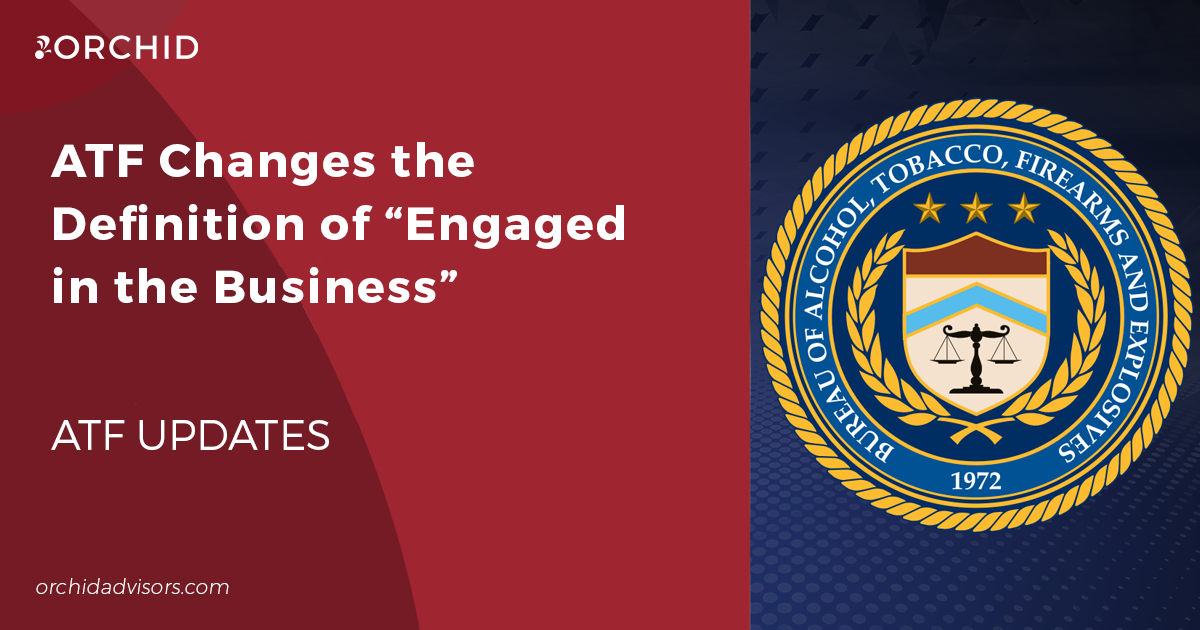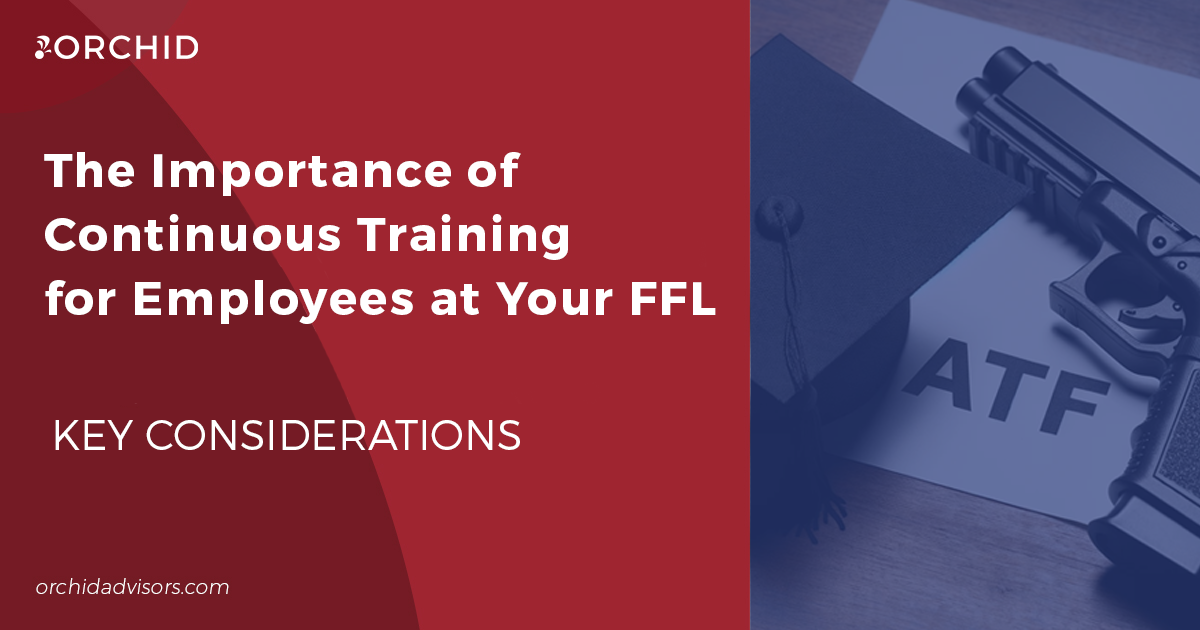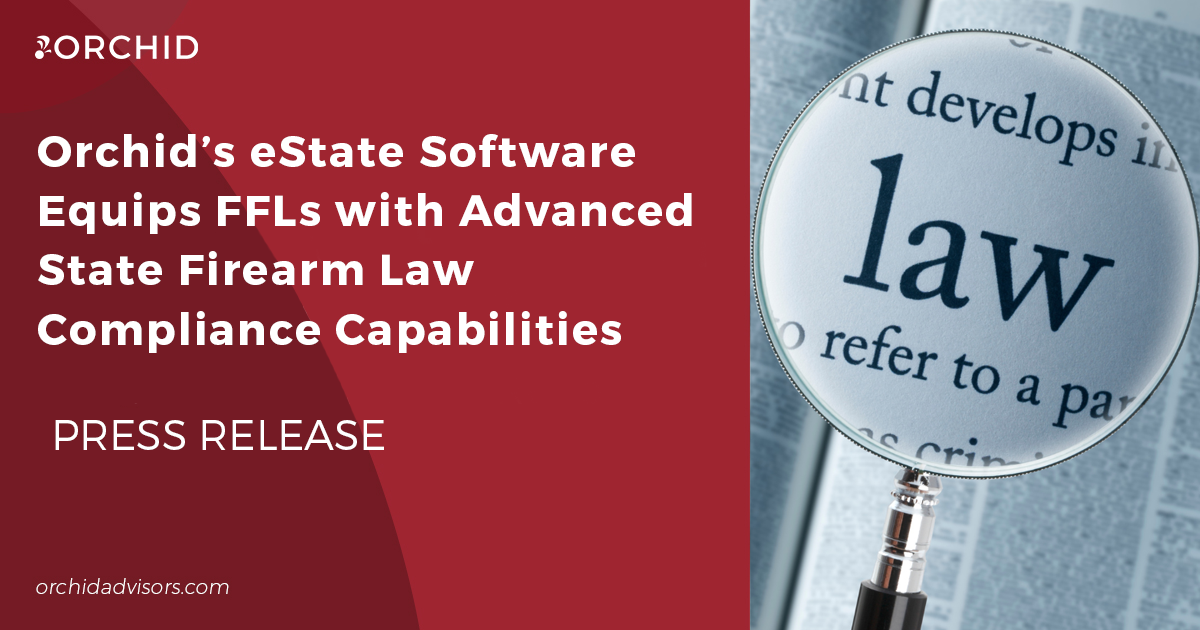BEST PRACTICES IN FIREARM DESTRUCTION AND SCRAPPING
There are several regulations found in ATF’s Firearms Regulations Reference Guide that instruct the industry on the proper ways of manufacturing and acquiring firearms. For example, you know that the markings must be a specific height and depth and you know that the frame or receiver is regulated and must be entered into your A&D Book. More recent ATF Rulings have also spelled out some of the newer guidance in the industry such as the use of sub-contracting vendors. While there is a good deal of guidance surrounding the “birth” of the firearm; what about firearm destruction? What records must be kept? How can one be sure that their process surrounding scrap is secure? Today we will talk about some “best practices” to ensure that those firearms that have been laying around the shop waiting to be destroyed or the firearms that were manufactured that don’t quite meet the quality standards are handled properly. There are two main things to consider when destroying or scrapping. 1.) Firearm Scrap Security and 2.) Firearm Scrap Record-Keeping. Securing your firearms or regulated frames/ receivers that are intended for scrap is an important task. Just because they are intended for destruction doesn’t mean they aren’t accountable in ATF’s eyes. Some ideas to consider:- To-be-scrapped firearms must be inventoried during an ATF inspection if they are onsite and are considered an “open disposition”.
- If you aren’t able to immediately destroy a firearm once it is deemed scrap, then the firearm can be segregated and secured in a locked container. This is especially the case when these pieces are regulated and serialized.
- While theses “junk” firearms may have decreased in value, the street value of such firearms or frames/receivers has not.One of the most recent common theft issues is that of firearms waiting to be scrapped; some assume that these pieces won’t be missed if stolen.
- Items to be scrapped can be collected through the store or manufacturing plant and centrally located in a locked bin, waiting for the day the physical destruction takes place.
- There should be very limited access to this bin to control the “ins and outs”.
- Scheduling a regular “scrap day” helps to keep the bin from getting overloaded and promotes control over the process as a whole.
- Before you cut, shear, crush i.e. destroy your firearm, you should first record the firearms placed into your scrap bin on a scrap log or a to-be-destroyed log.
- This is a list of the firearm Make, Model, Serial Number, Type, Caliber/Gauge, and the date it was entered into the bin.
- On scrap day, this list should be validated against the physical firearms for verification prior to scrap; and once scrapped should be used to make the appropriate dispositions into the A&D Book.
- The A&D Book should be populated almost immediately after the destruction to ensure accuracy.
- Another detail to pay attention to is making sure that your A&D Book accurately reflects the firearm type at the time of destruction.
- If you are disassembling a firearm and only scrapping the frame or receiver, then you’re A&D Book must first reflect the change in form prior to the final scrap disposition.
- Lastly, when destroying an NFA firearm, be sure to prepare a letter to the NFA Branch, informing them of the destruction and requesting that they amend your National Firearms Registration and Transfer Record to remove the NFA items scrapped. And take note of the firearm type as certain NFA firearms have requirements pertaining to the method, location and number of cuts.
More Articles Relating to Firearm Destruction, Serialization or ERP
- Five Best practices in Firearm Serial Number Application
- Five Best Practices in Firearm Serial Number Tracking
- Five Best Practices In Firearm Serial Number Reservation
- Firearm Serial Number Recording
By Jon Rydberg CEO, Orchid Advisors Orchid Advisors assists firearms manufacturers, distributors and retailers in achieving compliance and operational excellence through education, technology, software and consulting solutions that reduce risk, cut costs, and provide expert guidance to make our client’s business more successful and efficient.






0 Comments